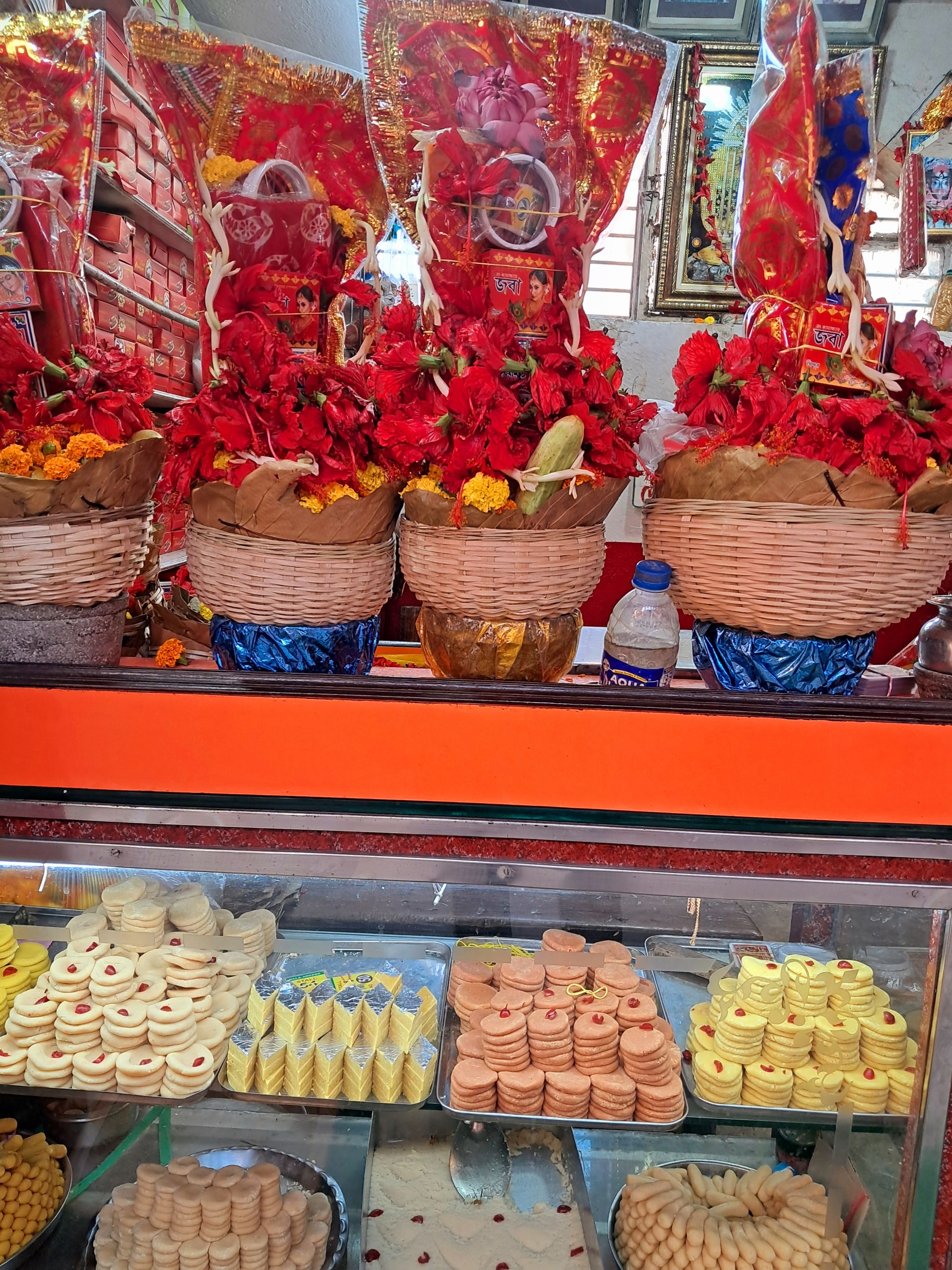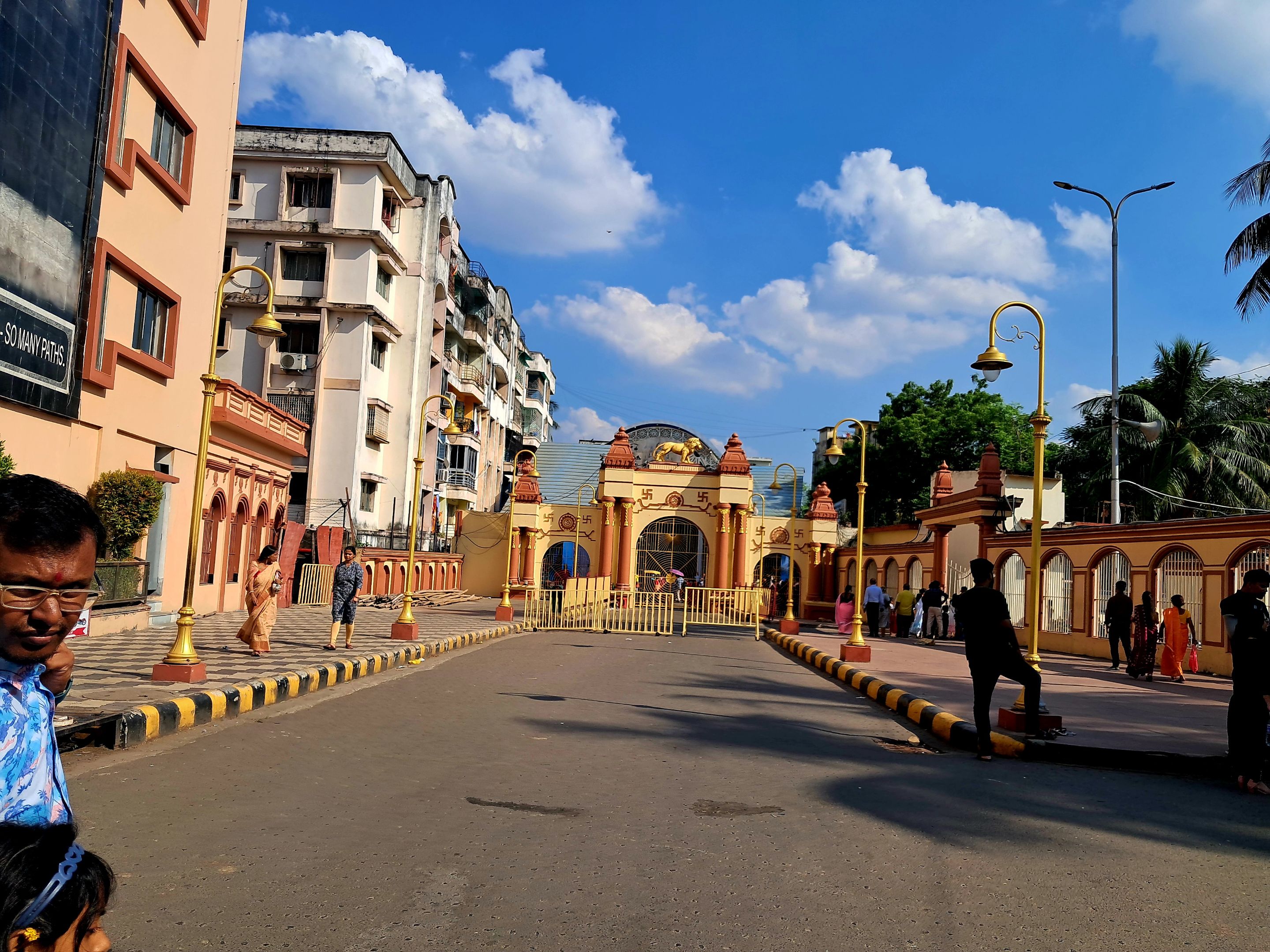The Dakshineswar Kali Temple in Kolkata, West Bengal has a rich history. It is one if the holy place for religious minded people. My visit to the place fives me immense satisfaction and presence ofnunique power at the temple sanctrum. It is one of the most visited and popular place in Kolkatta. Any trip to kolkatta is incomplete without being at the place. It is highly recommended for the unique experience, of heritage , aesthetic , tranquility and religious value of this economic landmark.

I do not have much photographs to support the beautiful temple in India. Photography is often prohibited at temples to maintain a sacred atmosphere and to protect the sanctity of the place. Many belive that using cameras and phones can distract devotees. Also we visit the place to offer prayers not for photography. Some say that taking pictures or videos inside a temple can negatively impact the religious sanctity of the place. Some temples have warning signs and may take legal action against visitors who take pictures or videos.
There is strict "NO" in carrying any electronic device inside the temple complex. I manage to click the beautiful temple from outside.

Dakshineswar Kali Temple in West Bengal, India, is famous for its association with the 19th century mystic, Shri Ramkrishna Paramahamsha Dev, and for its architectural brilliance.
The temple was built in 1855 by Rani Rashmoni, a wealthy widow and devotee of Kali, after she had a dream where the goddess told her to build a temple in her honor. Rani Rashmoni wanted to create a place of peace and spirituality for all, regardless of religion, caste, creed, or sect. The temple was a hub for religious and philosophical discussions in the 19th century.
The temple is well connceted via local transport alongwith the metro train. Make sure to reach the temple as early as possible to avoid the rush. We reached the temple after crossingbthe hoogly river. Again we took a ferry ride from Belkut. It took us 30 minutes to reach the besutiful location.

The temple is situated on the east bank of the Hooghly River, an arm of the Ganges. As soon as we get nearer, we felt differr level of experience and devotion among the fellow passenger. The temple complex is known for its symmetrical layout, intricate carvings, ornate domes, and towering spires. The temple is built in the traditional "nava-ratna" style, with nine spires on the upper two stories of the three-story temple. It features sculptures depicting scenes from Hindu mythology. The main temple is surrounded by a large courtyard with rooms along the walls. The temple complex also includes 12 shrines dedicated to Shiva, a temple to Radha-Krishna, a bathing ghat on the river, and a shrine dedicated to Rani Rashmoni.

I am sharing whatever I find inside the temple. Outside the temple complex, we have many other facilities. While there were a separate lane of shops, selling differrnt offerings and sweets, flowers.


There was a huge building dedicated for mass kitchen. Finding a huge crowds outside, I avoided getting inside the building. But looking at the huge structure, it can easily accommodate a good number of people. There are private restaurants too offering different food items to the visitors at a reasonable cost.

The temple is closely associated with the 19th century mystics, Ramakrishna Paramhansa and his wife Sarada Devi. According to legend, Ramakrishna attained divine enlightenment at the temple after witnessing a vision of the goddess Kali. Anyone who can vist the temple pure mind and soul would expeirnce the presence of divine power.

The presiding deity of the temple is Kali. Kali is a Hindu goddess who represents the opposing forces of destruction and creation, as well as time, death, and fertility. She is a manifestation of the Great Goddess Devi. Ramakrishna was a priest at the temple for 30 years. The temple is a pilgrimage site for both Hindus and members of other religions. The temple has landscape outside the mainbtenple complex where people can sit, or rest or do other things. It has a huge entrance gate.

Visitors to Dakshineswar temple feel a sense of peacefulness and divine calm. While they admire the navratna style architecture, they feel connceted with the divine power.
Vest time to visot the temple is around Novemeber to March. The winter season is very pleasant to take a tour of this place. Else, in summer it get hard as at many place you have to walk without footwear. I recently made to the place and enjoyed completelly.
Peace!!
Namaste @steemflow
Posted Using InLeo Alpha